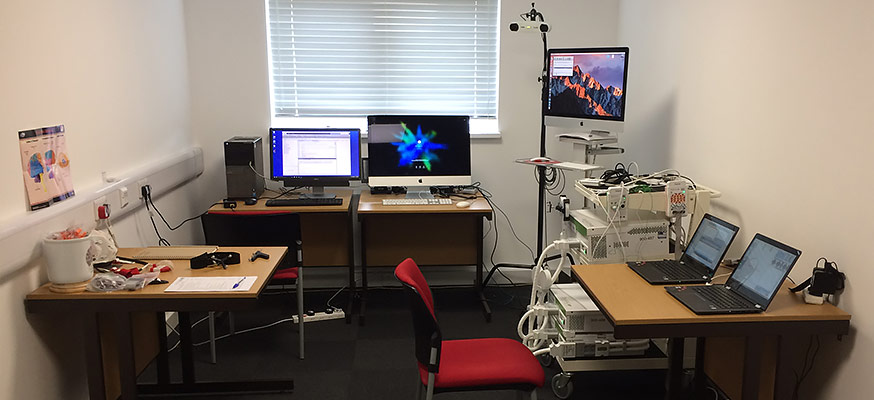
Neuroscience of Speech and Action Laboratory
Research in the laboratory focuses primarily on investigating the neural bases of speech communication. We are interested in studying how normal brains communicate, and also what goes wrong in the brains of people with speech and language impairments.
To study this, we focus on the entire auditory pathway, from the ear to the auditory cortex, and beyond. We look at how auditory areas of the brain interact with other, non-auditory areas of the brain, to help us understand the neurobiological network that subserves speech perception, and how the network adapts depending on the situational context. Some questions that we are currently researching include: How do sensory and motor brain areas interact during speech perception? How do descending auditory projections influence low-level speech perception? How can we use information about the ear and the brain to detect communication difficulties and help to restore them?
Methodologies and Equipment
Transcranial Magnetic Stimulation and Neuronavigation
The lab has state-of-the-art Transcranial Magnetic Stimulation (TMS) facilities, which involves delivering magnetic pulses to the head that are able to safely and temporarily modulate brain activity. We have a repetitive biphasic stimulator (DuoMAG XT-100), which can deliver high- and low-frequency pulses bursts and trains (1 Hz, Theta Burst Stimulation, etc.). We also have a monophasic single and paired-pulse stimulator (DuoMAG MP-Dual). We combine stimulation with Brainsight neuronavigation, for MRI-based and model-based TMS navigation to allow accurate coil placement during stimulation. We have a working relationship with Lancaster Infirmary MRI unit, which is a short distance from the University. We use a variety of 70 mm and 50 mm figure-eight coils for single, repetitive, and paired pulses studies.
Electromyography
We use electromyography (EMG) to record ongoing muscle activity, as well as in combination with TMS to record Motor Evoked Potentials (MEPs). For this, we use a 2-channel DuoMAG amplifier, with a 50 kHz sampling rate, in order to record MEPs from speech muscles (lips) and hand muscles. This indexes the extent of excitability in the motor pathway from motor cortex to muscle.
Electroencephalography
The lab also currently has a dedicated electroencephalography setup (EEG). We use a TruScan 32-channel EEG system with a 6 kHz sampling rate that has been designed for excellent compatibility with simultaneous TMS and achieves extremely fast artefact recovery. We have a multi-trigger setup that currently achieves TMS-EEG combinations with offline and online TMS.


